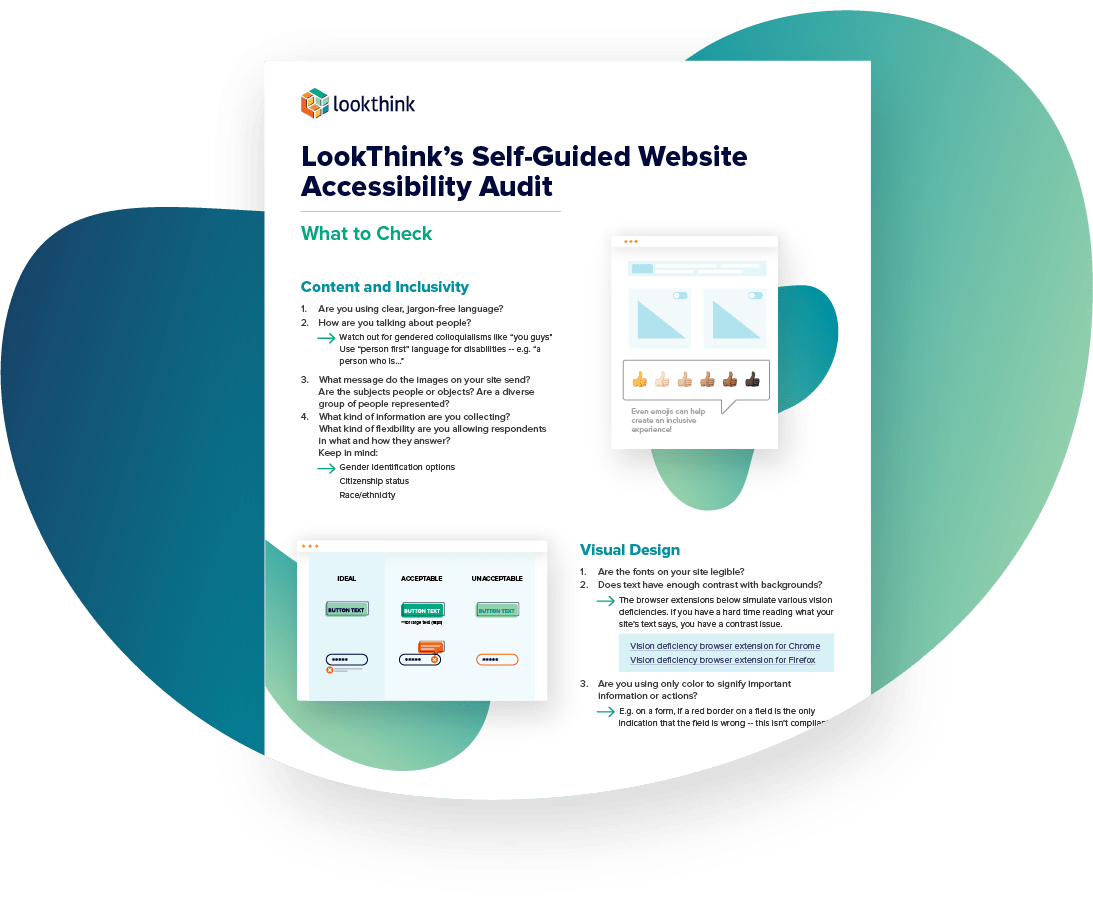First off, we need to align ourselves on what "inclusive design" even means. People often think of "inclusive design" and "accessibility" as being synonymous and I'd like to encourage us all to reframe the conversation.
"We’re not trying to attain accessibility, we’re trying to attain inclusivity.”
MATT LANDIS
Something can be accessible and not feel welcoming to the group you're trying to serve. "Othering" is the act and consequence of making someone or a group of people feel essentially different. We want to avoid creating this sentiment in our designs. A disability may be cognitive, physical, mental, sensory, etc characteristic of a person but the environments we create could be disabling as well. I know what you're thinking - "I'm an ethical designer; I never do that". I thought so too. A few years ago, I took a UX class and our instructor encouraged us to create an app to assist the in-store shopping experience at a supermarket. We spent weeks developing an app that included a photo directory of their inventory, where everything was physically located in the supermarket, a scanning feature for barcodes to build your bill before you got to the register so you could stay within budget - you name it. After we presented our prototype, our instructor asked, "what if your user was blind?" We had inadvertently created a disabling environment with our prototype and we had absolutely no idea. We didn't intend to but we did. It is our responsibility as designers to make sure we're always asking ourselves, "is this a welcoming space?"
Characteristics of Inclusive Design
An inclusive design ensures there are multiple entry points for a user to interact with your online experience that support a variety of preferences, learning styles, and levels of ability. If you're providing more opportunity for people to engage with your content, you're expanding the pool of people who can engage. For example, including closed captions on your video is a great way to include people with hearing impairments. It's also a great way to include people who are on the metro without their headphones or people who are on their phone while their college roommate or significant other is sleeping.
Here are some things to consider when creating an inclusive environment:
- Mixed interaction patterns: include options for active, interactive, and passive participants
- Multi-sensory experiences: ensure your design can hold up if you remove sight, audio, or touch
- Strategic decisions: ensure that your design that solves a problem for one user doesn't inadvertently negatively affect another type of user
- Diverse language and imagery: our language and visuals signal different sentiments for different people. Be cognizant of who you are (and are not) inviting in.
Our processes need to be inclusive too
Yes, our designs need to be inclusive but the processes behind our designs need to be inclusive too. At LookThink, we formed a cohort whose role it is to ensure that inclusivity permeates throughout all our departments. The designers have created processes and curated tools & resources to incorporate into the design process at every stage. The developers created testing processes to ensure our builds are compliant from a technical standpoint. The strategists champion the importance of inclusivity with our clients throughout the project lifecycle. Our sales team even includes inclusivity considerations in our proposals and SOWs. Inclusive Design is not an option at LookThink - we incorporate these principals into every project because we believe in building products that everyone can use.
If you're wondering whether your digital presence is inclusive, download our audit to test it out yourself.

